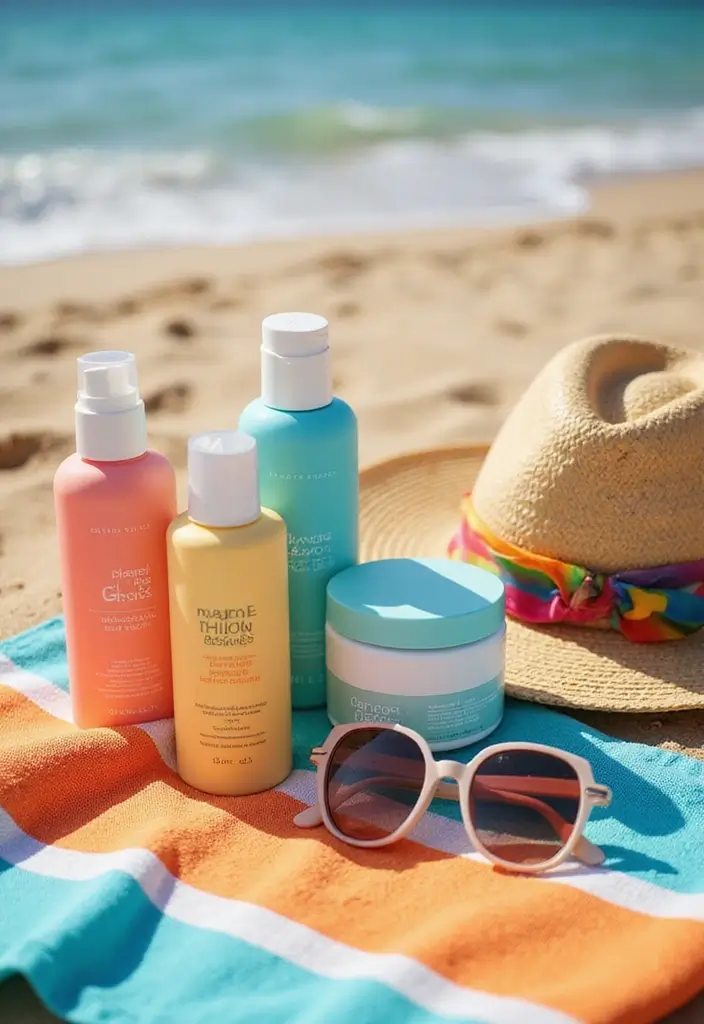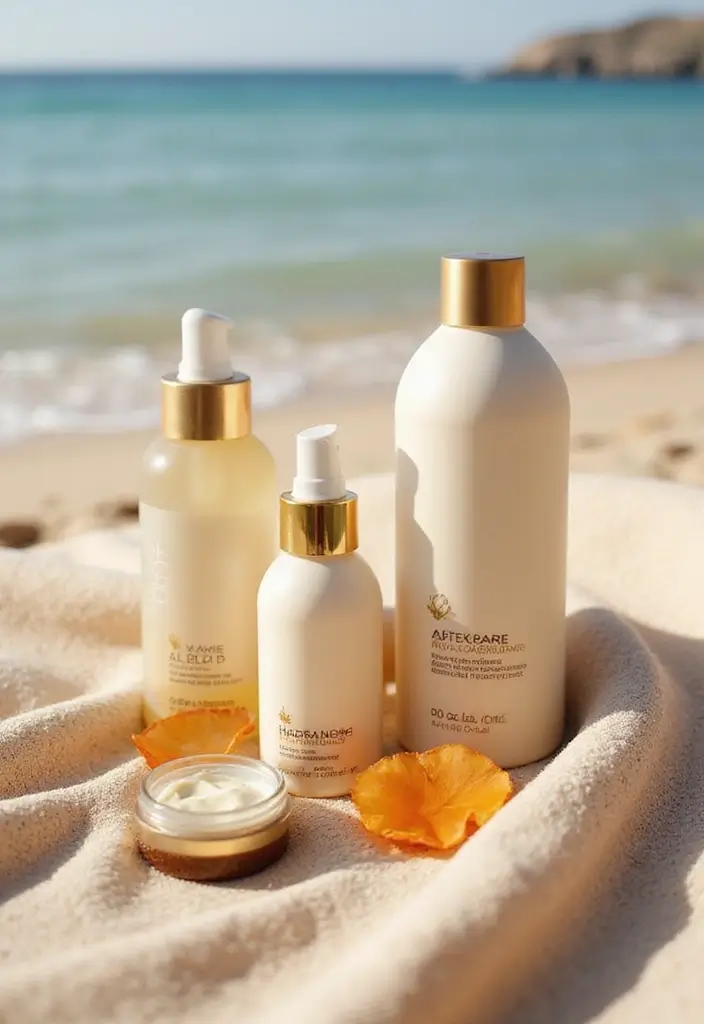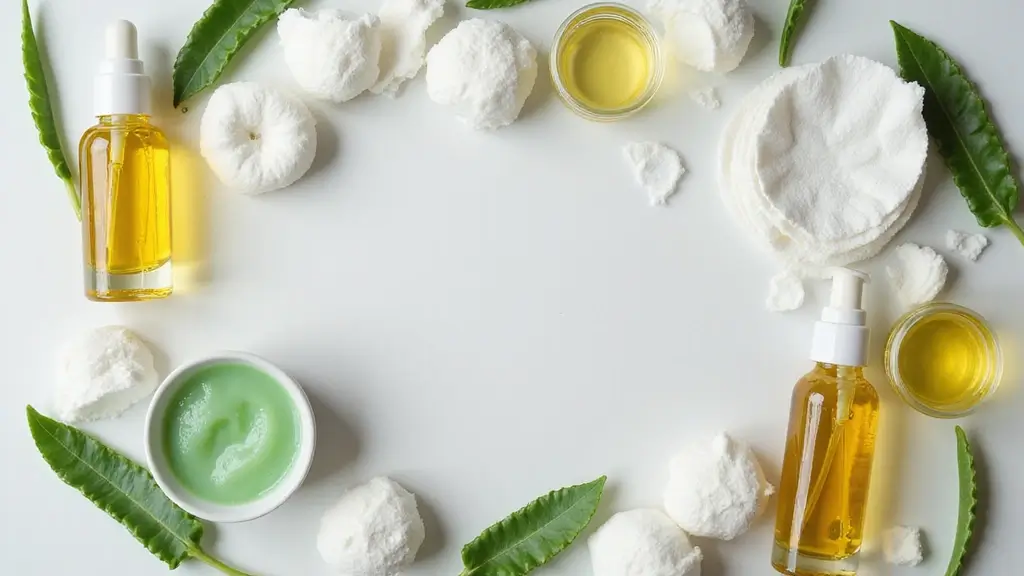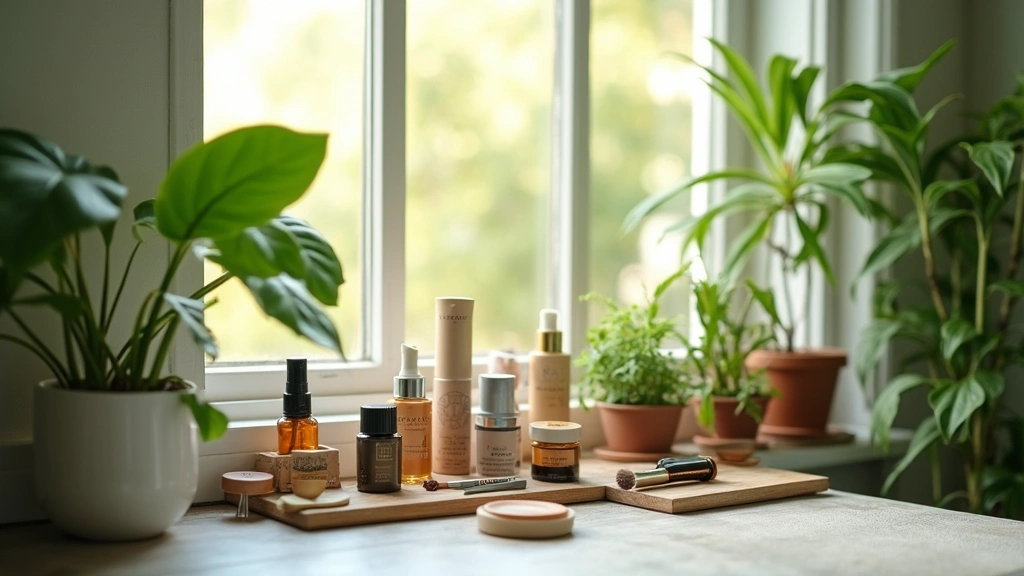Sunshine on your skin, the splash of water, and lounging poolside—sounds like summer bliss, right? But have you ever wondered if you can actually tan while swimming? With the allure of shimmering water and basking in the sunlight, it’s essential to understand how UV rays interact with water, how they can still penetrate and affect your skin, and what that means for your tanning goals.
Let’s dive into the details and explore the fascinating intersection of swimming and tanning! From the effectiveness of UV protective swimwear to the importance of water-resistant sunscreen, we’ll cover all the bases. Get ready for some serious tanning tips that will help you enjoy that summer glow while keeping skin health in check!
1. The Science of Tanning Through Water

When you swim, the water can actually dilute your ability to tan. This is due to how UV rays interact with water. Water absorbs UVB rays, which are primarily responsible for tanning, but it only minimally affects UVA rays. UVA rays penetrate deeper into the skin and can contribute to tanning as well as skin damage.
Here are some key points to consider:
– **Reflection and Refraction**: Up to 50% of UV rays can reflect off water, meaning you might still get tanned even below the surface. To enhance your tanning experience while swimming, consider using Neutrogena Ultra Sheer Dry-Touch Water Resistant and Non-Greasy Sunscreen Lotion with Broad Spectrum SPF 70. This water-resistant sunscreen helps protect your skin from harmful UV rays while you’re enjoying the water, allowing you to maximize your tanning potential safely.
– **Depth Matters**: The deeper you are under the water, the more UV rays are absorbed, reducing your tanning potential. Just a few inches can make a difference! To ensure you’re protected, consider pairing your swim with UV protection swimwear. This type of swimwear provides an added layer of defense against UV rays, helping you enjoy your time in the water without worry.
– **Skin Type and Tanning Efficacy**: Different skin types react differently to sun exposure. Fair skin tends to burn faster, while darker skin may tan more easily. To enhance your tanning results, you might also want to use Hawaiian Tropic Tanning Oil Pump Spray, SPF 25. This tanning oil not only helps you achieve a beautiful glow but also offers sun protection, making it a great addition to your sunbathing routine.
Understanding these factors and incorporating the right products can help you strategize your tanning sessions while being mindful of sun protection.
2. Protect Your Skin: The Need for Sun Protection

Your skin’s health should always be a priority, especially when you’re having fun in the sun and water! Prolonged sun exposure can lead to sunburn, premature aging, and even skin cancer. Therefore, investing in a solid sun protection plan is essential.
Consider these sun protection essentials:
– **Broad-Spectrum Sunscreen**: Always choose a water-resistant sunscreen with a high SPF (30 or higher) that protects against both UVA and UVB rays. The Neutrogena Ultra Sheer Dry-Touch Water Resistant and Non-Greasy Sunscreen Lotion with Broad Spectrum SPF 70 is a great option, ensuring your skin stays protected while you enjoy the water.
– **Reapply Often**: Sunscreen can wash off while you swim, so make sure to reapply every two hours or immediately after swimming. The Banana Boat Sport Ultra SPF 50 Sunscreen Spray is perfect for easy reapplication, helping you stay protected without hassle.
– **Avoid Peak Sun Hours**: The sun is strongest between 10 AM and 4 PM. Try to swim outside this window to minimize sun exposure. Additionally, consider wearing protective clothing like a UV protection swim shirt while outdoors. This can help shield your skin from harmful rays while keeping you comfortable.
By investing in the best sun protection, you not only promote tanning efficacy but also keep your skin looking youthful and healthy!
3. Choosing Swimwear with UV Protection

Fashion meets function in UV-protective swimwear! Nowadays, many brands offer stylish swimwear designed not only for aesthetics but also to protect your skin from harmful UV rays. This kind of clothing is especially beneficial when you’re spending long hours in and out of the water.
Here’s what you need to know about UV swimwear:
– **UPF Ratings**: Look for swimwear with a high Ultraviolet Protection Factor (UPF) rating. A UPF of 50+ blocks about 98% of UV rays, making options like the UV protective swim shirt an excellent choice for sun safety.
– **Fit and Comfort**: Make sure the swimwear fits well and is comfortable. The right fit will allow you to move freely and enjoy your time in the water. Consider pairing your favorite swimsuit with the UV protective swim leggings, which offer not only comfort but also additional protection while you swim or relax by the pool.
– **Styles and Trends**: There’s a range of options from chic one-pieces to sporty bikinis—choose a style that reflects your personality while offering great protection! Don’t forget to complete your look with the UV protective swim cap, which can shield your scalp and hair from harmful sun exposure.
Investing in UV-protective swimwear can be a game-changer for both your tanning and skincare routine.
4. The Role of Water-Resistant Sunscreen

Every swimmer’s best friend, water-resistant sunscreen, is a must-have for outdoor fun! It’s formulated to provide an extra layer of protection when splashing in the waves or lounging by the pool. But not all sunscreens are created equal, and knowing how to choose one can make all the difference.
Here are some tips for selecting the right water-resistant sunscreen:
– **Choosing formulation**: Look for lotions or sprays that are labeled ‘water-resistant’. For instance, Neutrogena Beach Defense Water-Resistant Sunscreen offers SPF 70 and is designed for both face and body, ensuring that you stay protected during your outdoor activities, even in wet conditions.
– **Avoid harmful ingredients**: Be wary of chemical sunscreens that may harm marine life. Opting for reef-safe or mineral-based sunscreens is better for the environment. The Coppertone Sport Water-Resistant Sunscreen Lotion is an excellent choice, providing SPF 50 protection while also being kind to the ecosystems you enjoy.
– **Testing for effectiveness**: Don’t forget to do a patch test for any new sunscreen on a small area of your skin to check for allergic reactions. If you’re looking for a convenient spray option, the Banana Boat Ultra Sport Water-Resistant Sunscreen Spray is a great solution. With SPF 50 protection and a formula that is easy to apply, it can help ensure thorough coverage without the hassle.
By understanding how to select and apply water-resistant sunscreen correctly, you’ll enjoy the sun while keeping your skin protected!
Don’t let water wash away your glow! Choose a water-resistant sunscreen to stay protected while you swim and tan. Remember, not all sunscreens are equal—pick wisely for lasting fun in the sun!
5. Tanning Tips for Poolside Relaxation

Whether it’s a lazy afternoon by the pool or an adventurous swim, having the right tanning strategy can enhance your glow while keeping your skin safe. Here are some effective tanning tips that will help you achieve that sun-kissed look:
– **Optimize Your Position:** Lay flat on a towel or float for even tanning. Consider rotating every 30 minutes to ensure a balanced tan on all sides. Using an reflective pool float can also help maximize your exposure to the sun, as it bounces UV rays onto your skin.
– **Use Reflective Surfaces:** Position yourself near reflective surfaces, such as white tiles or metallic floaties, to enhance the tanning effect. A good option is the reflective pool float, which not only adds comfort but also aids in tanning by directing more sunlight toward your skin.
– **Hydrate, Hydrate, Hydrate:** Drinking water is crucial to keep your skin hydrated from the inside out while you’re exposed to sun and water. To give your skin an extra boost, consider using La Roche-Posay thermal spring water. This facial mist hydrates and soothes your skin, making it feel refreshed and helping to maintain your glow.
With these tips and the right products, you can relax by the pool while successfully enhancing your tan!
6. Understanding Pool Water and Tanning

Swimming in chlorinated pool water can influence your tanning results. Chlorine and other chemicals can sometimes create a barrier on the skin, altering how UV rays penetrate. It’s essential to be aware of how pool water might impact your tanning:
– **Chlorine Effects**: Prolonged exposure to chlorine can dry out your skin, making it more susceptible to sun damage. To combat this, always rinse off after swimming to remove chemicals. Additionally, using a good moisturizer, like the Neutrogena fragrance free daily facial moisturizer, can help restore hydration and support your skin’s barrier, keeping it healthy and less prone to damage.
– **Chemical Balance**: Pools that are balanced correctly (pH, alkalinity) can minimize potential adverse effects on your skin while you’re tanning. Keeping your skin well-hydrated before swimming can further enhance your tanning experience.
– **Alternative Options**: If you’re concerned about pool chemicals affecting your tan, consider natural water bodies or ensure that your skin is well-moisturized before swimming. A great choice is the Neutrogena ultra sheer face sunscreen with SPF 60, which provides broad spectrum UVA/UVB protection and is water-resistant for up to 80 minutes. This way, you can enjoy the sun while protecting your skin from potential damage.
Mindful swimming can lead to a better tanning experience while safeguarding your skin from harsh chemicals.
7. The Impact of Cloud Cover

Did you know you can still tan on cloudy days? A common misconception is that cloud cover fully blocks UV rays. In reality, up to 80% of UV rays can still pass through clouds, which means tanning is possible even when the sun isn’t shining directly. Here’s what to keep in mind:
– **UV Index Awareness**: Check the UV index before you head out. Even on cloudy days, a high UV index means stronger rays. To help monitor the UV levels, consider using a sunlight uv index meter. This handy device will alert you with beeping sounds if the UV levels are high, helping you stay informed and protected.
– **Regular Protection**: Regardless of the weather, apply sunscreen consistently to prevent unexpected burns. For a reliable option, try uv clear face sunscreen spf 46. It’s oil-free and contains zinc oxide, making it dermatologist recommended for effective broad-spectrum protection.
– **Stay Alert**: If it looks like the sun might peek through, be ready to adjust your position and layer on that sunscreen! You might also consider wearing a uv protection swim shirt for additional coverage while enjoying outdoor activities like swimming or hiking.
Understanding the impact of cloud cover can help you embrace spontaneous tanning opportunities while keeping your skin safe!
8. Tracking Your Tanning Progress

To achieve the perfect tan, monitoring your progress can be key. Keeping track of how your skin reacts to different tanning methods can lead to better results over time. Here’s how to do it:
– **Before and After Photos**: Take pictures of your tan at various intervals to gauge progress. This can help identify what methods work best for your skin. Consider using a tanning progress journal to organize your photos and notes in one place for easy reference.
– **Skin Reaction Journal**: Keep a journal of how your skin feels after each tanning session. Note any signs of irritation or dryness, so you can adjust your routine accordingly. Alongside your journal, using a quality sunscreen like sunscreen with high SPF will help protect your skin while you tan, reducing the risk of irritation and ensuring safer tanning experiences.
– **Tanning Frequency**: Pay attention to how often you tan, as too much exposure can lead to burns. Finding the right balance is critical for a healthy tan. With your consistent tracking routine and the protective benefits of a good sunscreen, you’ll reach your tanning goals while ensuring skin safety!
9. Enjoying Natural Water Bodies for Tanning

Swimming in natural lakes or oceans can enhance your tanning experience! Natural water bodies not only provide an opportunity for fun but also have unique properties that can impact tanning:
– **Saltwater Benefits**: Saltwater can exfoliate your skin, making it smoother and more receptive to tanning. To ensure your skin stays nourished, consider using Dove brown sugar and coconut butter body scrub, which deeply nourishes for smooth, radiant skin.
– **Natural Reflection**: Water bodies reflect sunlight effectively, increasing exposure to UV rays. Remember to protect your skin by applying broad spectrum sunscreen with SPF 46. This oil-free formula is dermatologist recommended and features zinc oxide for excellent protection.
– **Reconnect with Nature**: Enjoying the natural beauty of lakes or seas can contribute to a relaxed tanning environment, making it feel like a mini-vacation. Pair your outdoor adventure with UV protection swimwear that features UPF 50+, ensuring you stay protected while enjoying your time in the water.
Natural bodies of water can add a refreshing twist to your tanning routine while still requiring sun protection!
10. The Balance of Tanning and Skincare

Finally, maintaining a balance between tanning and skincare is crucial for long-term skin health. The sun can be harsh, and while a nice tan can be beautiful, it’s essential to nurture your skin too. Here’s how to achieve that balance:
– **Moisturize**: Hydrating your skin before and after tanning helps to maintain elasticity and prevent dryness. A great option is eos Shea Better Body Lotion Vanilla Cashmere, which offers 24-hour moisture and is lightweight and non-greasy. It’s perfect for repairing sun damage while leaving your skin feeling soft and smooth.
– **Regular Exfoliation**: Gently exfoliating your skin periodically will help remove dead skin cells and keep your tan even. Consider using Cetaphil Exfoliating Face Wash. This extra gentle scrub is suitable for all skin types, ensuring you maintain a fresh and clean surface for your tan to shine.
– **Post-Sun Care**: After spending time in the sun, using soothing products can make a significant difference. Try Soothing After Sun Gel with Aloe. It helps relieve sunburn and soothe your skin after tanning, providing essential aloe to promote recovery and a healthy glow.
By focusing on skincare along with tanning, you can enjoy that sun-kissed look without compromising skin health.
A beautiful tan is great, but don’t forget your skin! Hydrate, exfoliate, and protect to keep that glow without the damage. Balance is key to happy, healthy skin!
Conclusion

Tanning while you swim is totally possible, but it definitely requires a thoughtful approach! By understanding how UV rays work in water, investing in protective swimwear, and maintaining a solid skincare routine, you can achieve that gorgeous tan safely. Remember to soak up the sun responsibly and enjoy every moment by the water!
Whether you’re hitting the pool or the beach, prioritize sun protection and take care of your skin. So go ahead, make a splash this summer and enjoy the sun’s rays with confidence!
Note: We aim to provide accurate product links, but some may occasionally expire or become unavailable. If this happens, please search directly on Amazon for the product or a suitable alternative.
This post contains Amazon affiliate links, meaning I may earn a small commission if you purchase through my links, at no extra cost to you.
Frequently Asked Questions
Can you really tan while swimming in the pool?
Yes, you can tan while swimming in the pool, but the results may not be as effective as tanning on dry land. When you swim, water absorbs some UVB rays, which are the primary rays responsible for tanning. To maximize your tanning potential, consider applying water-resistant sunscreen before you dive in!
What types of sunscreen should I use for swimming?
For swimming, it’s best to use water-resistant sunscreen that offers broad-spectrum protection against both UVA and UVB rays. Look for products labeled as ‘water-resistant’ for up to 80 minutes, and remember to reapply after swimming or heavy sweating to ensure your skin stays protected!
Does swimming in saltwater affect tanning compared to chlorinated pools?
Swimming in saltwater can actually enhance your tanning experience! Saltwater not only helps exfoliate the skin but can also provide a natural glow. In contrast, chlorinated pool water may create a barrier that alters how UV rays penetrate your skin. Always apply sunscreen to protect your skin regardless of the water type!
How can I choose swimwear that protects my skin while tanning?
When selecting swimwear, look for options that offer UV protection. Many brands now create stylish swimsuits made from fabrics that block UV rays. These pieces combine fashion with function, allowing you to enjoy the sun while minimizing harmful exposure. Check the UPF rating for effective protection!
What are some tips for effective tanning while swimming?
To achieve a beautiful tan while swimming, start by applying a generous amount of water-resistant sunscreen before you hit the water. Try to swim during off-peak hours (like early morning or late afternoon) when UV rays are less intense. Also, take breaks from the water to lounge poolside, allowing your skin to soak up those rays safely!







